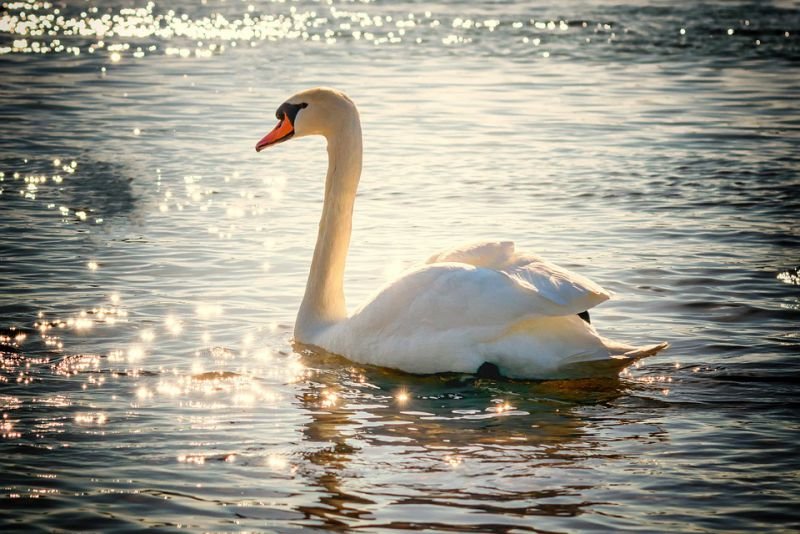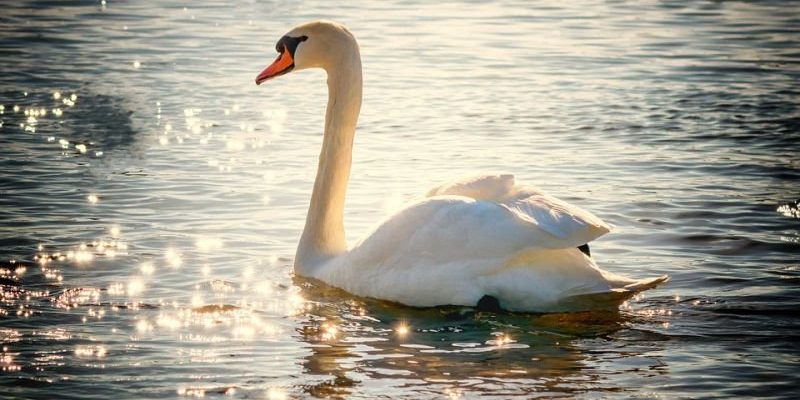
As we dive deeper into the world of swans, you’re going to discover some surprising facts that showcase just how fascinating these birds truly are. From their social habits to their impressive migrations, swans have stories to tell that go beyond their picturesque appearances. So, let’s explore the top ten interesting facts about the swan and see what makes them such remarkable creatures!
1. Swans are Highly Social Creatures
You might be surprised to learn that swans are incredibly social animals. They don’t just float around alone; instead, they often live in family groups or large flocks. When you see them on lakes, they’re usually not just hanging out. They are often bonding, preening, or communicating through a series of sounds, which can include honks, trumpets, and even soft murmurs.
Honestly, swans are known for forming lifelong bonds with their partners. Once mated, they stick together for life, which is pretty romantic, don’t you think? This loyalty makes them a symbol of love in various cultures. So, the next time you spot a pair of swans, remember they might just be the ultimate power couple in the bird world!
2. Swans Have Impressive Lifespans
Swans are not just pretty faces; they also have impressive longevity. In the wild, swans can live anywhere from 10 to 20 years. In captivity, where they are protected from predators and have a steady food supply, some swans have been known to live even longer—up to 30 years! It’s like they’ve unlocked the secret to a long life.
You might be wondering what contributes to their longevity. Good nutrition, adequate shelter, and low-stress environments play huge roles in their life expectancy. While swans can face challenges from predators and environmental factors, their ability to adapt and thrive in various habitats is a testament to their resilience.
3. Swans Are Majestic Migrators
Here’s the thing: swans are not just beautiful; they are also remarkable travelers. Many species of swans migrate seasonally, covering hundreds or even thousands of miles. For example, the Whooper Swan travels from its breeding grounds in Iceland to warmer regions in Europe for winter.
Imagine being a swan and flying across vast landscapes, navigating by instinct and perhaps a little luck! These migrations usually coincide with changes in weather and food availability, ensuring they find ideal living conditions. Their migratory patterns, especially in species like the Tundra Swan, are fascinating examples of adaptation and survival.
4. Swans Are Not as Graceful on Land
You might find it amusing that, while swans are famous for their grace in water, they can actually be quite clumsy on land. Their long necks and large bodies make walking a bit of a challenge. When they do walk, it often resembles a waddling gait, which is a significant contrast to their elegant gliding in water.
This awkwardness is largely due to their anatomy. Swans are designed for swimming with their powerful webbed feet and streamlined bodies. It’s almost like they’re meant to be in their element—the water! So, the next time you catch a swan on land, just remember that even the most graceful have their clumsy moments.
5. Their Diet is Quite Varied
You might be surprised to learn that swans are omnivorous, meaning their diets cover a wide range of food. They primarily eat aquatic plants, but they also enjoy insects, small fish, and even grains and leaves from nearby plants. You can imagine them foraging through the water, diving down with their long necks to reach food sources at the lake’s bottom.
Swans have a unique feeding technique called “tipping.” They tilt their bodies forward while keeping their feet on the lake bottom, allowing them to reach deeper underwater plants without fully submerging. This fascinating behavior allows them to enjoy a variety of tasty treats while showing off their adaptability to different food sources.
6. Swans Have a Unique Communication Style
Did you know that swans have a rich vocabulary, too? They communicate through various vocalizations and behaviors. Whether it’s through a loud honk to warn others or soft coos during courtship, they have an impressive range of sounds that help them convey their feelings and intentions.
Interestingly, swans also use body language to communicate. For instance, when they flap their wings or bow their heads, they’re expressing everything from aggression to affection. It’s this combination of vocal sounds and physical gestures that makes swan communication so fascinating and complex.
7. Swans Are Strong and Territorial
Here’s something you might not expect: swans can be quite territorial, especially during breeding season. They are known to defend their nesting areas fiercely against intruders, which can include other swans, ducks, or even humans who wander too close.
Swans use aggressive displays like hissing or flapping their wings, which can be an intimidating sight. Their size and strength make them formidable protectors of their young. So, if you happen to come across a nesting pair, it’s wise to admire from a distance and let them keep their space!
8. Swans Play an Important Role in Ecosystems
Swans aren’t just beautiful creatures; they also play a significant role in their ecosystems. By feeding on aquatic plants and algae, they help maintain the health of their habitats. Their foraging behavior can prevent overgrowth of certain plant species, ensuring a balanced environment for various aquatic life.
Moreover, swans are indicators of environmental health. A healthy swan population often signals a clean water source and a thriving ecosystem. By understanding their role in the environment, we can appreciate how important they are beyond their stunning looks.
9. There Are Several Different Species of Swans
While you might be most familiar with the mute swan, there are actually several different species of swans around the world. Each species has its own unique characteristics and habitats. Some notable ones include:
- Trumpeter Swan: Known for its loud trumpeting calls and large size.
- Whooper Swan: Recognized by its yellow and black bill and migratory habits.
- Tundra Swan: Small and migratory, common across North America.
Exploring the various species can be a fun way to learn more about these fascinating birds and their diverse habitats. Each species has its own unique adaptations that help it thrive in different environments.
10. Swans Are Vulnerable to Human Activity
Unfortunately, despite their beauty and significance, swans face numerous threats from human activities. Habitat loss, pollution, and hunting have all had adverse effects on swan populations worldwide. It’s important to realize how our actions impact these majestic birds and their habitats.
Conservation efforts, like wetland protection and awareness campaigns, are crucial for safeguarding swan populations. By supporting these initiatives, we can help ensure that future generations of people—and swans—can enjoy the beauty and grace these birds bring to our world.
In conclusion, swans are much more than the pretty creatures we admire on tranquil lakes. They are complex, social beings with fascinating behaviors and significant roles in their ecosystems. By learning about them, we can foster a greater appreciation for these elegant birds and the environments they inhabit. So, the next time you see a swan gliding gracefully across the water, remember all the wondrous facts that make them remarkable.

